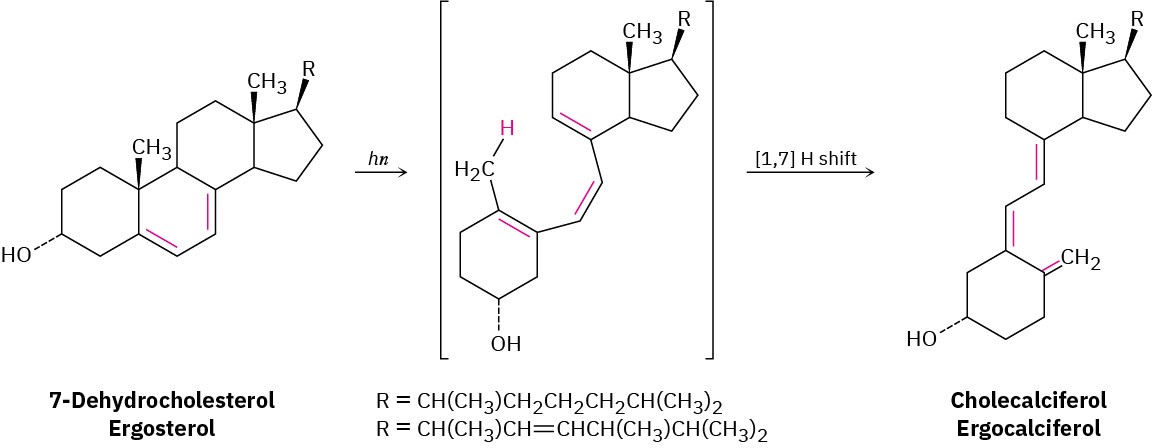Vitamin D, discovered in 1918, is a general name for two related compounds, cholecalciferol (vitamin D3) and ergocalciferol (vitamin D2). Both are derived from steroids (Section 27.6) and differ only in the nature of the hydrocarbon side chain attached to the five-membered ring. Cholecalciferol comes primarily from dairy products and fish; ergocalciferol comes from some vegetables.

Figure 30.17 Here are the sunbathers, again, with their chemical work complete. (credit: “Tanning” by Meraj Chhaya/Flickr, CC BY 2.0)
The function of vitamin D in the body is to control the calcification of bones by increasing intestinal absorption of calcium. When sufficient vitamin D is present, approximately 30% of ingested calcium is absorbed, but in the absence of vitamin D, calcium absorption falls to about 10%. A deficiency of vitamin D thus leads to poor bone growth and to the diseases rickets in children and osteoporosis in adults.
Actually, neither vitamin D2 nor D3 is present in foods. Rather, foods contain the precursor molecules 7-dehydrocholesterol and ergosterol. In the presence of sunlight, both precursors are converted in the outer, epidermal layer of skin to the active vitamins, hence the nickname for vitamin D, the “sunshine vitamin.”

Pericyclic reactions are unusual in living organisms, and the photochemical synthesis of vitamin D is one of only a few well-studied examples. The reaction takes place in two steps, an electrocyclic ring-opening of a cyclohexadiene to yield an open-chain hexatriene, followed by a sigmatropic [1,7] H shift to yield an isomeric hexatriene. Only the initial electrocyclic ring-opening requires irradiation by so-called UVB light of 295 to 300 nm wavelength. The subsequent sigmatropic [1,7] H shift occurs spontaneously by a thermal isomerization.
Following synthesis under the skin, further metabolic processing of cholecalciferol and ergocalciferol in the liver and kidney introduces two additional –OH groups to give the active forms of the vitamin, calcitriol and ergocalcitriol.

